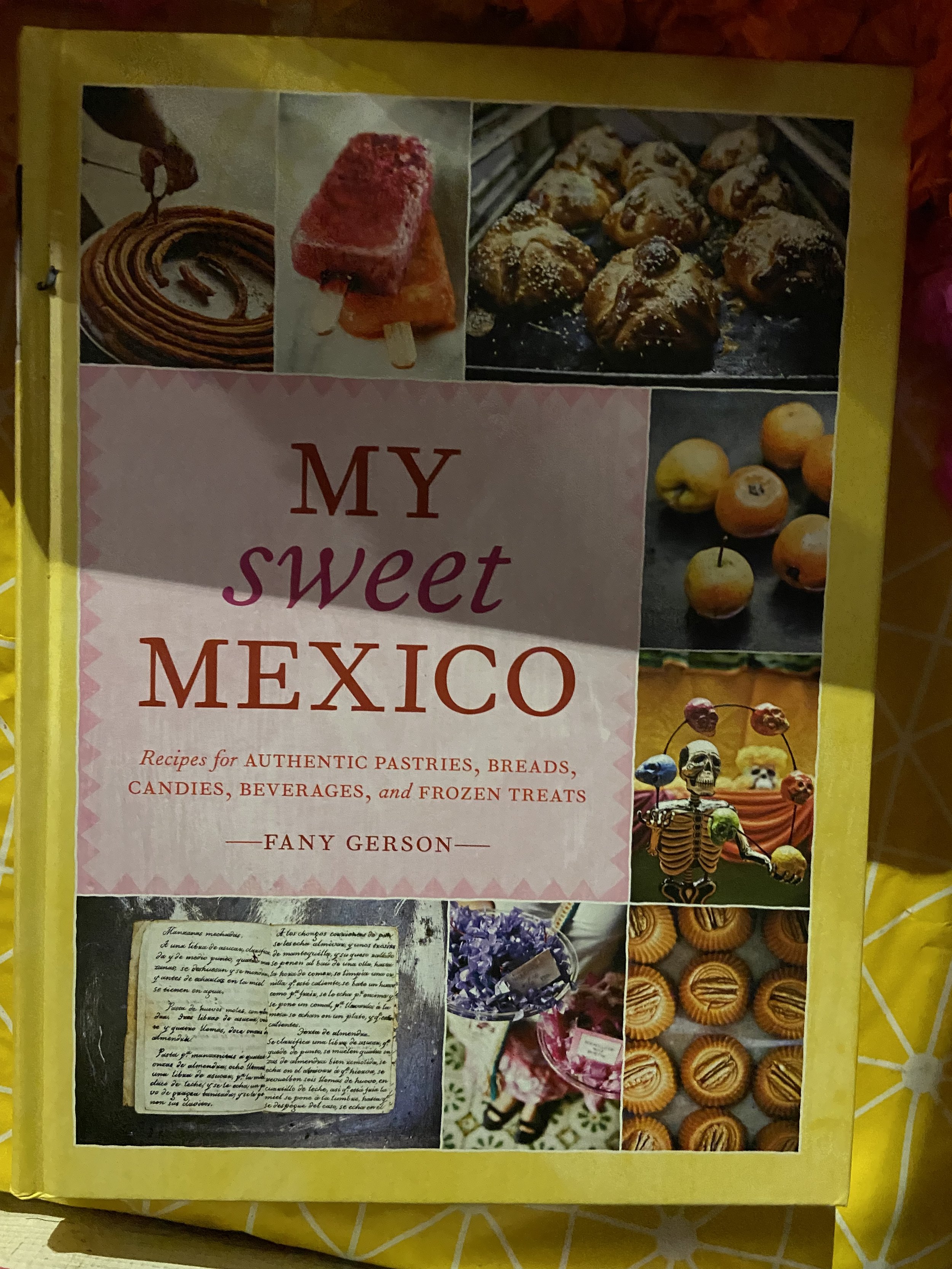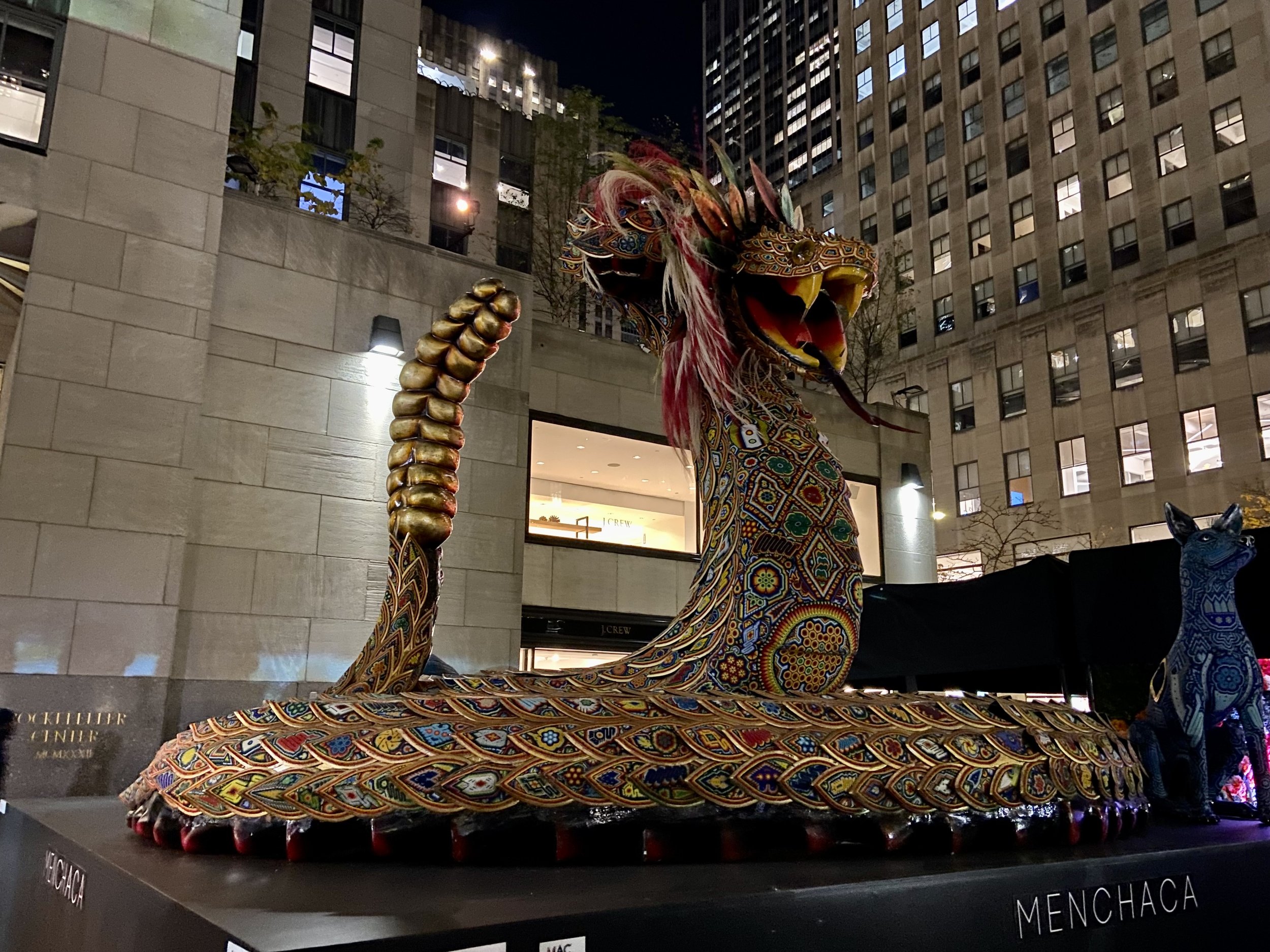CULTURE SHARE: The Grenchus Foundation @ Mexico Week: Día De Muertos at Rockefeller Center







CULTURE SHARE: The Grenchus Foundation @ Mexico Week: Día De Muertos at Rockefeller Center
The Day of the Dead (el Día de los Muertos), is a Mexican holiday where families welcome back the souls of their deceased relatives for a brief reunion that includes food, drink and celebration. A blend of Mesoamerican ritual, European religion and Spanish culture, the holiday is celebrated each year from October 31-November 2. While October 31 is Halloween, November 2 is All Souls Day or the Day of the Dead. According to tradition, the gates of heaven are opened at midnight on October 31 and the spirits of children can rejoin their families for 24 hours. The spirits of adults can do the same on November 2.
Origins of Day of the Dead
The roots of the Day of the Dead, celebrated in contemporary Mexico and among those of Mexican heritage in the United States and around the world, go back some 3,000 years, to the rituals honoring the dead in pre-Columbian Mesoamerica. The Aztecs and other Nahua people living in what is now central Mexico held a cyclical view of the universe, and saw death as an integral, ever-present part of life.
Upon dying, a person was believed to travel to Chicunamictlán, the Land of the Dead. Only after getting through nine challenging levels, a journey of several years, could the person’s soul finally reach Mictlán, the final resting place. In Nahua rituals honoring the dead, traditionally held in August, family members provided food, water and tools to aid the deceased in this difficult journey. This inspired the contemporary Day of the Dead practice in which people leave food or other offerings on their loved ones’ graves, or set them out on makeshift altars called ofrendas in their homes.
On the Day of the Dead, it’s believed that the border between the spirit world and the real world dissolve. During this brief period, the souls of the dead awaken and return to the living world to feast, drink, dance and play music with their loved ones. In turn, the living family members treat the deceased as honored guests in their celebrations, and leave the deceased’s favorite foods and other offerings at gravesites or on the ofrendas built in their homes. Ofrendas can be decorated with candles, bright marigolds called cempasuchil and red cock’s combs alongside food like stacks of tortillas and fruit.
For more information on Day of the Dead, please go here
This Día de Muertos celebration in NYC incorporates traditional and modern art by prominent Mexican artists that will be on display for the public to enjoy.
Find Out More Here!
The Grenchus Foundation will also be creating a little skit from our fun outing to Dia de Muertos in Rockefeller Center!! - We will be sharing this soon, but you will also see some of the images below in the skit!
ps. Meet some of the characters, we decided to use in our skit - below! : - )




The Jaguar is one of the creatures most important within the pre-hispanic worldview, representing the union of heaven and the earth and totality. The jaguar warrior called "Ocelopilli" in the Nahuatl language was a member of the Mexican army who would be in it as a professional soldier. The Mayas knew it as "Balam or chacmol" and it was a symbol of strength and power.
The works of Menchaca Studio, have the intention of giving a voice to the original peoples, the jaguar who is in resistance against a context of oblivion, depredation and in danger of extinction and to nature and its four elements (water, earth, fire and air).
This orb of 161 X 164 X 231 cm has been made with resins, brass accessories with 14k gold plating. With applications in Jade, I have intervened with thousands of glass beads by Wixarikas (Huicholes) artisans. It represents mother earth, the element of strength, resistance, security, corn is the base of the earth.




Quetzalcoatl "The Feathered Serpent" the mythical and legendary character, the king of the gods among the pre-Hispanic peoples of Mexico, whose name is that means feathered bird or emerald and "Coatl" that means snake.
The creator god of the cosmos that brought the wind and the rains, the most powerful god and venerated by Teotihuacans, Mexicas, Toltecs, Olmecs and Mayans, although the latter called him Kukulkan. This deity represents the duality between the serpent and its spiritual part with its feathers.
This spectacular work of 454 X 478 X 316 cm has been made with epoxy resins and plasticine with 14 K gold plated applications. It has been intervened with more than two million glass beads by Wixarikas (Huicholes) artisans. represents and symbolizes life, light, wisdom, fertility and knowledge.



The king,
It was his nickname
your presence and style
marked a delirium
women and men
they danced in their style
in Las Vegas
always sang
in the casino.
Sculpture of 128 X 220 X 301 cm made with epoxy resins and plasticine, applications with paint and luxury crystals, intervened by Wixarikas (Huichol) artists with approximately 3 million glass beads glued one by one, capturing in the the iconography of the art.
(Believed to be Elvis)


“His rudeness
and character
it was his hobby
her beauty was maddening
his passions
they infuriated her
was without a doubt
a great diva
mexico misses her as a fervent guide.
Sculpture of 90 X 130 X 301 cm made with epoxy resins and plasticine, applications with paint and luxury crystals, intervened by Wixarikas (Huichol) artists with approximately 3 million glass beads glued one by one, capturing in them the iconography of their art.
(believed to be Priscilla Presley …. or someone else….?….)




Exhibit possible with generous support from Tequila Casa Dragones
Casa Dragones is named after the Dragones from San Miguel de Allende: a cavalry led by Ignacio Allende that eventually helped spark the independence movement from the Spanish, which led to the Mexican War of Independence. Although made in Jalisco, Casa Dragones is based in San Miguel de Allende.
González Nieves, co-founder and CEO of Casa Dragones and a Master Tequilera in her own right, is definitely a lady - and she's also the boss.
For the second consecutive year, “Mexico Week: Día De Muertos at Rockefeller Center” will take place from October 27 through November 2, 2022, in celebration of Mexico’s heritage and culture.
New Yorkers can engage with Mexican art, food, culture, music, and education hosted by The Consulate General of Mexico in New York City, the Mexican Cultural Institute, Museo de Art Moderno, and Rockefeller Center with generous support from Tequila Casa Dragones, American Airlines, Dos Equis, INTERprotección, and Visit Mexico USA.
An opening ceremony took place Thursday, October 27 at 11:00 am on Center Plaza at 30 Rockefeller Plaza featuring the Consul General of Mexico Jorge Islas; artist Pedro Reyes; and Maestra Tequilera Bertha González Nieves, CEO and Co-Founder of Tequila Casa Dragones.



